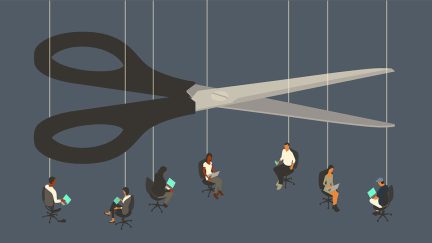Want the latest retirement plan adviser news and insights? Sign up for PLANADVISER newsletters.
PANC 2016: Financial Stress Survey
The third annual John Hancock Retirement Plan Services (JHRPS) survey found Americans are overwhelmed by financial stress—and they are not taking any steps to alleviate this problem. It is incumbent on retirement plan advisers to help participants overcome this through automatic features—including automatically enrolling them into emergency savings accounts, along with engaging them and educating them, said Patrick Murphy, president of JPRPS, speaking at the 2016 PLANADVISER National Conference.
“Our business is about helping people retire—putting the individual participant
at the forefront of everything you do,” Murphy said. “We launched this survey
in 2013 because, instead of guessing why people were not taking action, we
wanted to ask participants why they aren’t doing what they need to do, and now
we have to do something with this information.”
While the situation overall isn’t positive, “there have been some signs of
improvement on the road to retirement readiness,” he said. Seventy-nine percent
said their financial stress has increased over the past three years—but 22%
said it has decreased. “It is improving, but it is not gone,” Murphy said. “Retirement
is still people’s number one priority. People need a nudge, through automatic
enrollment and escalation, but we also need to provide advice for the big
picture, either with robo advisers or in person.”
Fifty-four percent said their personal financial situation is better than two
years ago. In 2014, 66% felt financial stress, and in 2016, that ticked down to
63%. In 2014, 69% said their financial stress was affecting them physically
and/or psychologically, but this year, that’s declined to 59%, Murphy said.
While 63% of people, on average, feel financial stress, for people who are divorced or widowed, as well as Millennials, that rises to 73%, Murphy said. Sixty-seven percent of women and single people feel financial stress. Seventy-three percent of lower-income feel this type of stress. “Only 55% of Baby Boomers feel financial stress—but their average retirement account balance is $140,000, so I would call them blindly happy,” Murphy said.
The potential elimination of Social Security is another financial worry people have. In 2014, 59% were troubled by this, and this year, it’s 75%. Asked what their most stressful financial decisions are, in 2014, people said budgeting; this year, that’s up to 51%. That is followed by choosing the right health care plan (31% in 2014 and 48% in 2016).
Asked what their financial priorities are, 95% said saving for retirement, followed by: saving for emergencies (92%), paying down debt (88%), preparing for health care expenses and long-term care in retirement (84%), and saving for a child’s education (84%).
Fifty-two percent said their savings are behind, 39% expect to retire later than they
had planned, Murphy noted.
The big question, he continued, is to help people allay these financial
concerns—because while people are aware of what they should be doing, few take the actual steps. Eighty-two percent of
people know they should save enough money to cover basic expenses in retirement,
but only 16% actually do, he said. Seventy-four percent know they should set
financial goals, but only 22% do; 70% would like to pay down debt, but only 17%
are doing this; and 64% think they should learn to live on less, but only 17%
are trying to do this.
It is the critical job of retirement plan advisers to “close the execution gap through plan design—through automatic enrollment, automatic enrollment into the age 50+ catch up provision, automatically sweeping existing employees not in the plan into the plan, automatically enrolling them into Roth 401(k)s, automatically enrolling them into an emergency fund, and using a ‘mega back door into the Roth,’ i.e. putting in after-tax month into the plan and converting it to a Roth at the end of the year,” Murphy said.
Consider this, he said: Ninety-two percent of Americans know they need emergency savings—but 62% have less than $1,000 in savings, and 49% have no savings at all. The work of an adviser to improve all of these variables has never been as important as it is today, Murphy said.
You Might Also Like:

Vanguard to Lower Asset Minimum for Digital Adviser Access

Capital Group Names Top Focus Areas for DC Investment Consultants



